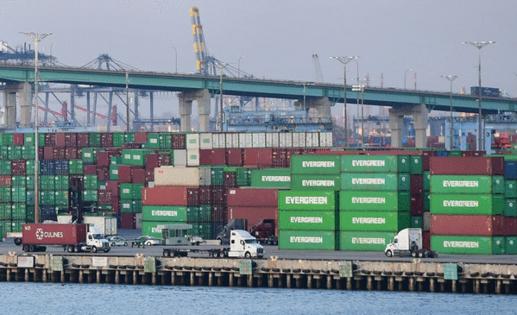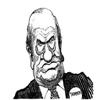Commentary: The true cost of Trump's tariff scheme
Published in Political News
Pundits sometimes claim that U.S. presidential campaigns are devoid of big, consequential policy ideas. That’s clearly not true this time around. Arguably the most profound policy change being proposed in this campaign is former President Donald Trump’s big idea to broadly raise tariffs on imported goods, possibly to levels the U.S. has not seen in many decades.
Tariffs, like all economic policies, come with trade-offs. New analysis of mine at The Budget Lab at Yale University, a nonpartisan fiscal research center, uses economic modeling and evidence to quantify some of these trade-offs. In short, the proposed tariffs will raise some revenue but at a severe - and literal - price tag to the economy.
You can think of a tariff as a bit like a sales tax on items as diverse as sneakers or car parts that are made outside the U.S. This presidential campaign has raised the question of who ultimately bears the burden of tariffs, Americans or foreigners. But this is a settled question in economics: the answer is domestic businesses and consumers, not foreign manufacturers. In fact, in many cases, businesses pass the cost of tariffs along to their customers in the form of higher prices.
Tariffs imposed by the U.S. vary by country and good. Some imports are entirely tariff-free, while some are quite high, such as the current 100% levy on certain Chinese goods. The “effective” tariff rate in 2023 — the weighted average tariff paid on all imported goods — was 2.5%. This is a bit higher than recent history but still very low relative to the longer term. In the early 1800s, when tariffs were the primary source of federal revenue, Americans had to pay astronomical rates on most imports, with the effective tariff often above 40% and at times exceeding 50%.
Policymakers at the time, and some economists since, argued that high tariffs made sense in the early 19th century given that the country’s domestic industry was still in its infancy, but this argument has been called into question with more recent research. Separately, there may be non-economic rationales for narrow tariffs that policymakers decide justify the economic costs, such as national security.
In a series of campaign remarks, Trump has laid out the contours of ideas to raise tariffs back to historical levels. He has suggested broad tariffs on all imports from trading partners that could range from 10% to 20%, and has raised the possibility of a tariff on all Chinese imports of 60%. In remarks in September, Trump floated the idea of a 200% tariff on Mexican imports. The Budget Lab simulated 12 illustrative scenarios that were various combinations of these different rates, and which assumed retaliation and no retaliation from the targeted countries.
Tariffs are, first and foremost, a tax, and Trump’s proposals would indeed raise meaningful revenue that could be used to shrink the federal budget deficit, which totaled $1.8 trillion in fiscal year 2024 ended Sept. 30. Under the most common interpretation of Trump’s proposal — a 10% tariff on all goods imports and a 60% tariff on Chinese goods imports — the U.S. raises $2.6 trillion over 10 years if other countries do not retaliate. Dial the non-China tariffs up to 20% and revenues rise by $4.4 trillion.
But there are several asterisks when it comes to tariffs as a revenue raiser. First, other countries almost certainly would retaliate against the U.S., and do so almost immediately, as, for example, China did within days when Trump imposed Section 301 tariffs against them in 2018. At The Budget Lab, I found that retaliation leads to the U.S. raising less of its own tariff revenue: 12% to 26% less under each proposal if other countries retaliated. That means the 10% broad/60% China proposal would only raise $2.2 trillion if there was retaliation, and the 20%/60% proposal $3.4 trillion.
Second, the conventional estimates above assume the economy stays fixed in size. In reality, past evidence along with The Budget Lab’s modeling suggest the economy would likely shrink in response to the tariffs, as whatever positive reshoring effects resulting from the tariffs would be more than overwhelmed by rising input costs, falling investment, and lower consumer spending and real incomes. Depending on the scenario, the level of real GDP would decline by 0.5% to 1.4% in the medium-term, which is the equivalent of shaving between $120 billion and $325 billion off the economy today. And a smaller economy means even less tax revenue raised. Using rules-of-thumb from the Congressional Budget Office, this range of GDP effects translates into $400 billion to $1 trillion less dynamic revenue than the conventional estimates. So, the fiscal upside would in fact be even smaller.
Third, prices would rise and real household incomes would decline in response to the tariffs. While a tenth of all consumer spending is on imports, a quarter of consumer goods spending is imported, so the tariffs would pinch households considerably. Consumers would face price increases of 1.2% to 5.1% depending on the specific proposal. That’s like suddenly getting between seven months and 2.5 years’ worth of normal inflation. For the average household, these price increases would lower the purchasing power of their annual income by between $1,900 and $7,600 in 2023 dollars. And since there is evidence that tariffs burden lower-income families more than upper-income families, the squeeze would be particularly severe for households that can least afford them.
After the transition to the new system was complete, the U.S. would find itself with an effective tariff rate between 9% and 29%. That would be the highest U.S. effective tariff rate since at least 1946 on the low end, and as far back as 1899 on the high end. Put another way, the U.S. federal tax system would suddenly be transported back a century, looking a lot more like it did in the days of Buster Keaton and the Model T.
The U.S. would also stick out internationally. World Bank data suggest that if these policies would have been in place in 2021, the U.S. would have risen from 110th in the world in overall effective tariff rate — near Iceland and Switzerland — to, at the low end, supplanting Cuba at No. 31, and, at the high end, having the highest effective tariff rate in the world, higher than Bermuda, Belize and The Gambia.
Trump’s tariff proposal could be the biggest shift in U.S. tax and trade policy in generations, and it could raise trillions of dollars in revenue. But as The Budget Lab’s findings show, the downside to the economy is potentially enormous. Pundits complained about not getting big policies; now they have an expensive one to talk about.
____
This column does not necessarily reflect the opinion of the editorial board or Bloomberg LP and its owners.
Ernie Tedeschi is the director of economics at the Budget Lab at Yale University and the former chief economist at the White House Council of Economic Advisers under the Biden administration.
©2024 Bloomberg L.P. Visit bloomberg.com/opinion. Distributed by Tribune Content Agency, LLC.




























































Comments